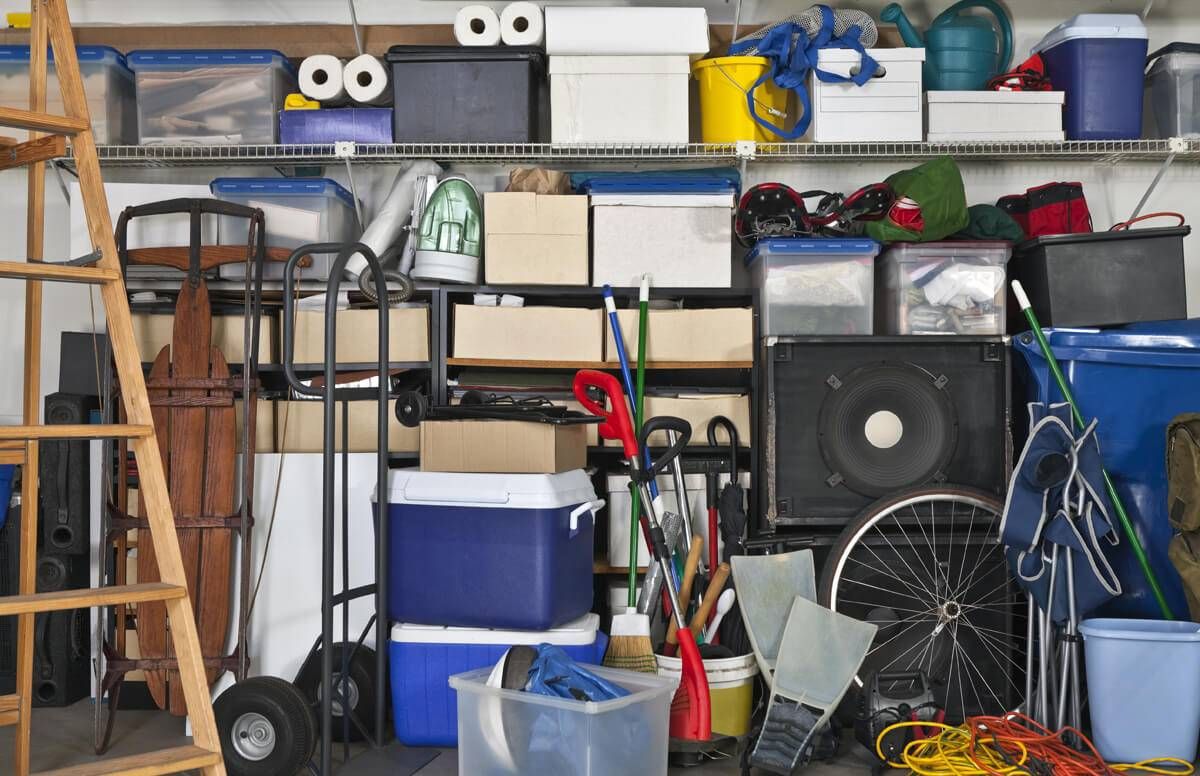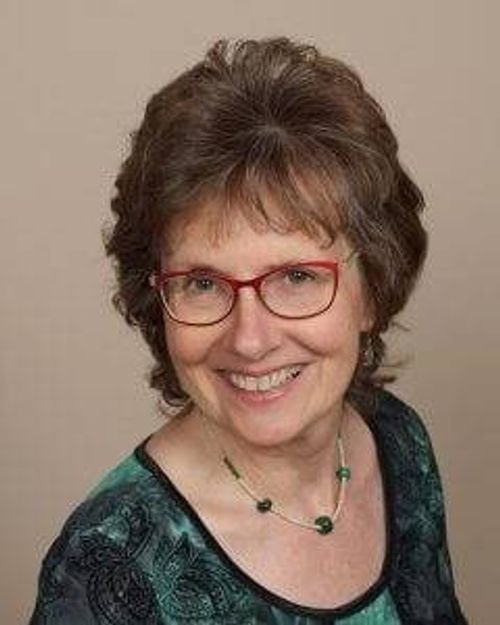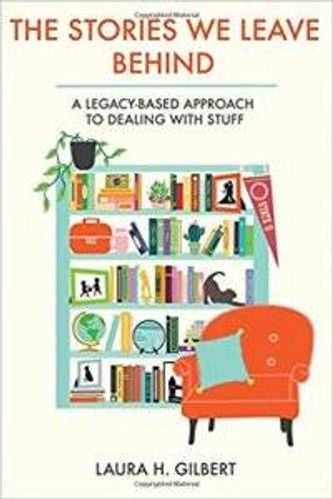What Boomers Should Do About All Their Stuff
The author of 'The Stories We Leave Behind' suggests a legacy-based approach
Last year, I wrote a Next Avenue blog post for our boomer readers that went, well, viral: “Sorry, Nobody Wants Your Parents’ Stuff.” Now, here’s a question for boomers: What about your stuff? For an answer, I recently spoke with Laura H. Gilbert, author of the smart new book on the topic, The Stories We Leave Behind. Her advice: take what she calls a “legacy-based approach” to dealing with your stuff.

I’ll let Gilbert — who’s a boomer — explain what that means momentarily, but first a little info about her and how she came to write the book. Gilbert, of the Twin Cities suburb Roseville, Minn., is a single mother of four grown kids, grandmother of six, and a retired former HR director, state of Minnesota policy analyst and professor with a Ph.D. She has also written four books about college and how to pay for it. Her father, who died a year and a half ago, was a mortician. Gilbert’s frail 95-year-old mom, who was a Big Band-era musician, lives alone in Florida.

People Shared a Similar Concern About Their 'Stuff'
“I retired — that’s with air quotes — to help take care of my mom,” shuttling back and forth between Minnesota and Florida, Gilbert told me. Her mom, Gilbert says, is “kind of a hoarder” who is “paralyzed by her relationship with stuff,” so many of her visits involved trying to find ways to pare her mother’s stuff. Increasingly, Gilbert says, people she knew (boomers, as well as Gen Xers and millennials) were sharing a similar concern: “What are we going to do with all this STUFF?!”
So Gilbert started writing ideas down about that, “for self-preservation.” She realized her mother’s most cherished stories were fading from memory and that, Gilbert says, was not the experience she wanted for her loved ones. This led her to compile into The Stories We Leave Behind her ideas about a legacy-based approach to stuff — making sure her stories wouldn’t get lost during what she calls her family’s “final cleanup,” after she dies.
The Discovery Half-Day Plan for Your Stuff
The linchpin: what Gilbert calls The Discovery Half-Day.
In the book, she describes that Discovery Half-Day scene as she hopes it will happen for her family after her death:
Meet at Mom’s place around 8 with donuts and coffee. Reminiscing, laughter, tears, more laughter (probably '80s dance music in the background). Explore rooms, closets and shelves. Pause to smile or chuckle over a trinket discovered here, a special book found there. Decide which stuff to keep, toss or donate. Angela (the firstborn) would create the list. Go to lunch. Done. Well ok, there’ll be time to box stuff, arrange for pickup and probably mop, but the hard part — identifying what was there and making distribution decisions — was done in a warm, supportive, roughly half-day experience with its own positive, affirming and hope-filled memories; before they got glossy-eyed and grumpy. ?
Here are highlights from my conversation with Gilbert about her advice for boomers regarding what to do about their stuff:
Richard Eisenberg: Tell me about the inspiration for writing The Stories We Leave Behind.
Laura H. Gilbert: I was getting such a positive response to the concept of a ‘legacy-based’ approach, but in my conversations about taking care of our parents and their stuff, people had so much heaviness and guilt. And a sense of shame. But when I would toss out my idea for what I call a ‘Discovery Half Day’ they would say: ‘That’s insane!’ Then the whole mood shifted and there was a sense of hope. A pathway out to deal with our stuff that wasn’t all about grief.
Why do you think a Discovery Half-Day is important for boomers to prepare for?
The main thing I’m trying to emphasize is embracing my life today and preserving a few stories I want to leave for the kids, about the values that are important to me — and not leaving a mess. It’s about embracing the best of me.
The concept of a Discovery Half-Day is very 21 century. In the 20 century, our parents died and we’d take however long we needed to go through the house. It could take a year or more. Now, it’s different. You look at the whole; not item by item. But to preserve our best stories, we need to make them obvious so when family members come in, those stories and themes are clear.
I worked for the Minnesota Historical Society and was talking to a curator there about this and she she said: ‘What you’re talking about is curating your own life.’
Arranging for the Half-Day is to make the big decisions to help them [your family members]. Then, they can spend time healing, grieving and laughing over memories instead of being mired in this difficult painful arduous task. I want to set up my place so after the funeral, when they walk in, they are able to find what they need — like my important financial papers — and discover the main themes of my life, so they can make all the big decisions in a half-day.

And why write a book about this?
A lot of people volunteer at soup kitchens and other places; this is my best volunteer work.
Is this all about downsizing?
It’s not so much about getting rid of stuff; downsizing and decluttering is an outcome. My focus is embracing the things you want to leave behind.
What are the benefits to boomers and to their loved ones for taking a legacy approach to their stuff? What do they get out of it?
Freedom. That’s what I hear over and over again. My kids love it so when we get together I’m not saying: ‘Are you sure you don’t want this?’ We get to enjoy each other and learn new things about each other. Our time together is really good. It’s not stressful.
People see it as a huge gift. It’s taking a potential tsunami of stuff they see coming at them and replacing that with the essence of who we are. Our families may not want our stuff, but they want us to be happy and live life to the fullest.
A Legacy approach shifts things back from stuff to the people. It’s ‘I don’t need her old wringer washer; I want to remember her stories of the road.’
You wrote that you didn’t want to let your stuff become your family’s burden. What do you mean?
That’s the situation I’ve experienced with my mom and I hear it from so many people: ‘I wouldn’t want my kids to walk into my place and have to deal with all sorts of things.’ Whether that’s ‘Where is the title to the car we want to sell?’ Or just boxes and boxes of random things in the closet.
After someone dies, if they’ve got lots of random stuff, that becomes a main theme for the family. I didn’t want to be remembered that way. I didn’t want to leave a psychological or physical burden of random stuff.
That doesn’t mean when they’re there, there won’t be things to clean. There will be dust!
How much do you need to do with your family in advance?
The ideal scenario would be that you’ve talked with your family in advance. But if you can’t, and something is particularly meaningful to you and you don’t want to lose that memory, put a Post-It on the back and write on it.
Tell me about your personal legacy approach to dealing with your stuff.
When I looked at my stuff through this new lens, I found a lot of boxes in my closets with a lot of things I’ve held on to. For example, my high school theater stuff. And I thought to myself: ‘If I only have three to five themes for my life, what do I want them to be? Is this one of the main themes I want my family to know?' The answer was: Nope. My theater stuff became a distraction.
So what did you do with your theater stuff?
I reached out to a theater friend who knew about a script library. So some of the scripts went there and some went into the trash.
How can people uncover their legacy stories?
Think about when you’re imagining 50 years from now, what do you want them to say about you? ‘God, did she leave a mess! We found yarn and mice!’ Or do you want them to say: ‘Everything was organized. Grandpa left notes on things and everyone remembered all the good stories about him.’
When I started, I had 20 themes. That’s too many.
You say that when you’re selecting legacy stories, tough stories require care. What do you mean?
When somebody dies, stuff is sometimes discovered. Like: you have a sibling someplace. Or Grandpa had a gambling problem or a mistress. In going through stuff, you sometimes discover these things and you can decide that they’re huge distractors or that they’re something that’s important. Maybe you don’t put in all the details. It’s about being careful and respectful.
You also say cherished items hold clues to cherished stories. What do you mean?
For example, my 1966 Hullabaloo Dance Book [an instruction manual for the 1960s musical variety TV series, Hullabaloo].
When I came across it, I said to myself; “I’ll give away the couch, but I won’t give away my Hullabaloo book.’ It’s about what the book represents: fun, activity, movement. Things from when I was in middle school. And my daughter, who’s a dancer. I don’t care if the kids keep it. I just want them to see it as they sort through my stuff because it will make them laugh.
You have a mantra when it comes to stuff: ‘Ask. Confirm. Believe.’ Can you explain that?
I cannot tell you how many people my age and parents’ age tell their kids: ‘Don’t you want this? I think you want it. I saved this for you.’ And the potential recipient says: ‘No thanks. I really don’t.’ And then the current owner will keep it anyway, thinking: ‘I know they’ll want it someday.’ And decades go by and people get resentful on both side. ‘Why do you keep asking me?’ ‘Why won’t you take it?’
I ask my kids once. And if they say ‘Yes,’ it’s theirs. If they say ‘No,” it means I’m going to get rid of it. I’ll give them a second chance sometimes and say: ‘Are you sure?’ And if they say they’re sure, it’s gone.
What’s your advice about family photos, furniture, clothes and jewelry?
Think about your life today, what you do and want to do. If you’re constantly moving something around so you can find stuff you like, do yourself a favor and stop moving it and let it go.
How much of your stuff have you gotten rid of?
If you asked me how much of my stuff I had five years ago compared to today, I have 20 percent of what I had before. I’ve added things, also. For example, some of my stuff and my parents’ stuff is gone and it’s been replaced by my grandkids’ stuff, because that’s a big part of my life now.
Doing this gives you space to add new things; to say: ‘I’m still here. I’m not done.’
How much more do you have to go to finish taking care of your stuff?
I’m where I want to be. If you came over, you’d say:’ Really?’ But I live here. It feels like me, and a place where my friends and family can come. The stuff I want them to find and hate to see tossed is very clear and compelling.
How has your life changed since you began this journey?
Totally for the better. I see a lot of boomers like me at a transition point. We’ve been at the forefront of a lot of movements and now we’re at the forefront of changing how we live out our lives.


